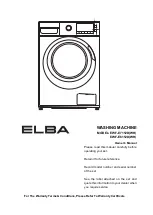
114
SATIN STITCH FOOT
The Satin stitch foot is grooved on the bottom to permit dense
stitching to pass under it easily. It is most useful for sewing
satin stitches. It can also be used as an alternative to the
General Purpose Foot when sewing stretch stitches.
Closely spaced zig-zag stitches are called satin stitches. This
is an attractive stitch used primarily for appliqueing and bar
tacking. Slightly loosen top thread tension for satin stitching.
Use a backing of stabilizer or interfacing to avoid puckering.
TWIN NEEDLE
A twin-needle produces two rows of parallel stitches for pin
tucks, double top stitching and decorative sewing.
When using twin-needles,
the stitch width should never be
set above twin needle mark,
regardless of the stitch you
have selected. Doing so will result in broken needles and
possible damage to your machine.
Use of a Singer Brand twin needle (Style 2025) is strongly
recommended.
The twin needle is an optional purchase.
THREADING THE TWIN NEEDLE
1. Place a spool on each spool pin. Thread the two threads
as one. Draw one thread through each needle from front to
back.
2. Pick up bobbin thread as for single needle sewing. Pull the
three threads together under the presser foot to the back of
the machine, leaving about 6” (15 cm) clear.
NOTE: Needle threader cannot be used to thread the
twin needle.
SPECIAL ACCESSORIES
Helpful Hints:
1. Always select the Twin Needle Mode prior to
selecting a pattern. This will preclude any
possibility of the twin needle breaking.
2. Turning off the machine returns the machine to
normal sewing mode. Twin Needle is only active
when the Twin Needle Switch is lit red.











































